Carrying History, Defying Erasure - Irish Travellers and GRTHM
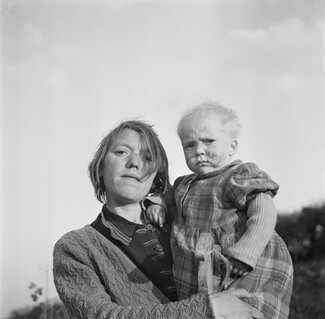
Exploring the pride, struggle, and resilience of Irish Traveller communities across generations.
Here’s something that doesn’t get said enough: not everyone wakes up in a brick house with a fence and a postcode and a neighbour who knows your name.
Some people wake up to the hum of tyres cooling after a long night drive. Some wake up to condensation on the ceiling of a trailer, the low murmur of a kettle boiling off-grid. Some wake up knowing they’ll be moved on before the council even clocks, they were there. And others—well, others wake up not entirely sure where they belong, because most of what they are has been erased from history.
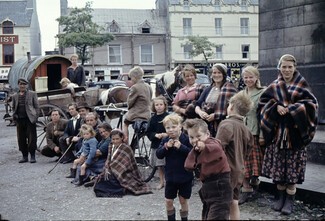
That’s what this GRT History Month is about – doing something to stop that erasure from history. The “GRT” in GRT History Month stands for Gypsy, Roma, and Traveller—but most people don’t even get that far. They just say “g*po”, or “p*key”, or they say nothing at all and look the other way.
So, we need to talk about language. Because words carry weight—especially the ones thrown at us. “Gypo” comes from Gypsy, twisted into something dirty, something to spit.
“Knacker” once meant someone who broke down dead horses—but it became a slur aimed at Irish Travellers, to mean worthless, worn out, fit for the scrap heap.
And “Pikey”? Its roots lie in turnpike roads—it was once just a word for people who lived and moved along them. But over time, it hardened into something uglier. Some say it comes from pike fish, bottom feeders, scavengers—dirty by nature. Whether fact or folk tale, it reveals the same thing: the world sees our way of life not just as different, but as beneath them. These words don’t just insult. They strip away humanity. And still, we walk through them like broken glass—head high, boots on, pride intact.
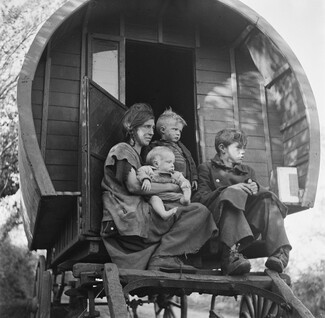
I am an Irish Traveller. We speak Gammon, or Cant, or Shelta, depending on the family. We’ve had our own traditions for centuries. Tinsmithing, horse-dealing, laying tarmac, boxing, storytelling. We’re not a relic. We’re not a problem to be solved. But you’d be surprised how many government policies have treated us like one.
In the 1960s and 70s, “assimilation” became the word. Travellers were told to settle. Halting sites were built far from communities, under motorways, next to landfill sites. A 1963 report called us “a people apart.” It framed our culture as a social illness.
Let’s not romanticise. Life on the road is not easy. But it is ours.
We are the people who can hitch a caravan to a Transit van in less than a minute.
Who know how to trace their family by memory, not maps.
Who cook over open fires, mend things instead of throwing them out, and call cousins brother, sister, blood.
We live by a different clock. We measure wealth not by what we own but by what we carry: loyalty, language, legacy.
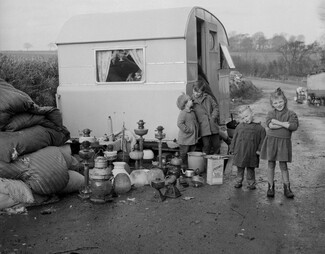
And in today’s world? The stats don’t lie, but they rarely get read aloud.
In the UK, Gypsy and Traveller communities have a life expectancy 10 to 12 years shorter than the national average.
Children from Traveller backgrounds are more likely to be excluded from school than any other demographic.
The suicide rate among Irish Travellers is six to seven times higher than the general population.
And over 60% of Gypsy and Traveller people report experiencing discrimination or abuse as part of their daily life.
But there’s something else. Something you don’t see in statistics.
You see it in the way Traveller boys square up young. The way boxing gyms are more than gyms—they’re safe spaces. Sanctuaries. We grow up knowing the world might not give us a fair go, so we learn to defend ourselves early. It’s not about aggression. It’s about preparation.
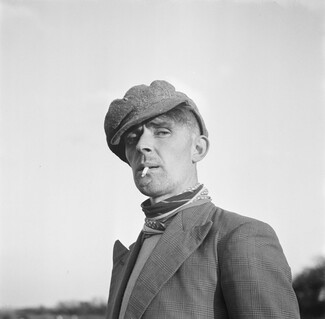
Because when you’ve been turned away from schools, from corner shops, from pubs, from restaurants—sometimes before you’ve even spoken—it does something to you. You grow a second skin. You carry yourself differently. You develop what people call a chip on your shoulder. But a chip doesn’t just appear. It’s carved there. One “no”, one slur, one eviction at a time.
And in a world that sees your pride as a threat, strength becomes sacred. So boxing isn’t just tradition—it’s therapy. It’s a rite of passage. It’s how you prove yourself, how you hold your rage, how you stay standing when everything else is trying to knock you flat.
But this isn’t just survival. It’s not just hanging on.
We are proud. Fiercely proud.
Proud of the girls who wear their culture like jewellery—loud, unapologetic, beautiful.
Proud of the men who work with their hands and carry their families on their backs.
Proud of our weddings and wakes, our music and mourning, our rules, our ways, our stubborn refusal to disappear.

Because we’ve been called backward, criminal, dirty, less-than—and we’re still here.
Still cooking bacon in a pan outside the trailer.
Still driving up mountains with no maps and no fear.
Still telling stories under skies no roof could contain.
We are the open road. We are the spoken word.
We are not stuck in the past—we’re carrying it forward.
And yet most people still think we’re a myth. A fairytale. A stereotype with an accent.
Because the default setting of the modern world is to build walls. Bureaucratic ones. Legal ones. Invisible ones. The kind you feel when you fill out a form and there’s no box that fits. When you turn up to rent a pitch and the landlord’s suddenly full up. When your culture only ever shows up in soap operas as a plot twist.
But this month—GRT History Month—isn’t about asking for sympathy. It’s about recognition. About telling the truth out loud. About saying that nomadism isn’t a disorder to be treated. It’s a way of being that predates empires and borders and office hours.
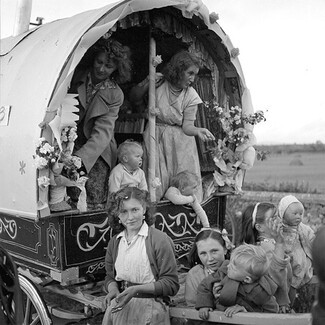
Because here’s the thing most people don’t realise: freedom isn’t the same as comfort. And culture doesn’t need concrete to have roots.
This is tarmac.
This is firelight.
This is 5 generations of the same name.
This is a boy shadowboxing in the yard while his nan boils the kettle.
This is a girl who knows how to braid a horse’s mane and speak her family’s secret language.
This is dignity. This is difference. This is home.
And maybe, just maybe, if you start seeing us not as a problem, but as people—then something shifts. The world gets a little wider. The story gets a little truer.
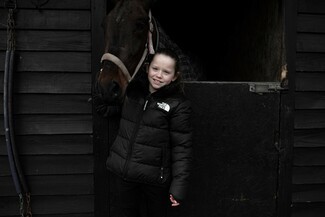
By Lawrence Ward
(Lead photo: A Mother and child in Ireland, photo taken on January 1st, 1930 - by By Willem van de Poll CC0, https://commons.wikimedia.org)